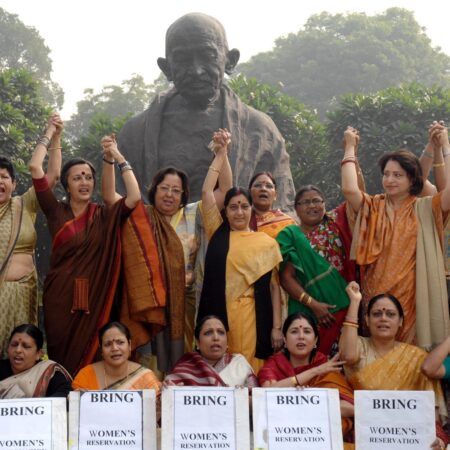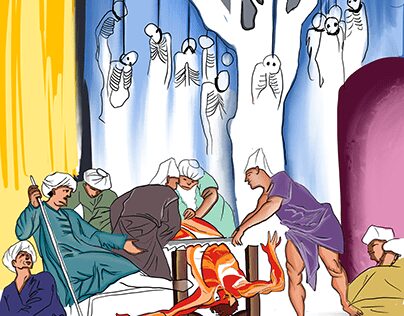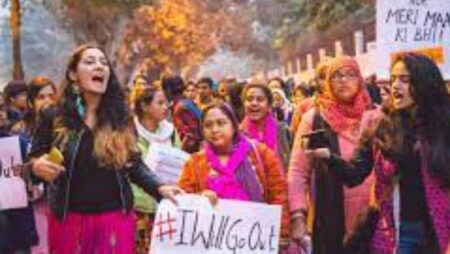Table of Contents
Anti-Muslim Abuse in Uttar Pradesh
A teacher from Uttar Pradesh was seen deliberately allowing students to slap a Muslim classmate in front of the entire classroom. The child is seen crying while the others continue to slap him constantly. She claims to have done this in an attempt to control the students.
The video has caused massive outrage and is essentially one that demonstrates the minds of the uneducated, availing of higher positions.
The teacher in Uttar Pradesh expressed little to no remorse when asked how she felt about this incident.
“I’m Not Ashamed,” says the woman. Tripta Tayagi, the name of the woman in concern, is also the principal of Neha Public School in Muzaffarnagar. A woman in such a noble and high position did not even hesitate to retain any ounce of humanity when it came to discrimination among Hindus and Muslims. What does it say about the education standard of our country? Of the people who are holding dignified positions? Of the future of our country? The boy was beaten up for 1-2 hours, says the father.
Yet, all hope is not lost. In another video that was posted on Twitter, it was seen that the boy who was beaten up is being hugged by his friend who had to do so owing to his teacher’s orders.
How History was reflected in Uttar Pradesh
Hail Hitler!-
Screamed the masses in support of the Nazis in 1939.
The era of fascism and Nazism was one of long history and pain. An immense amount of torture was inflicted upon the masses belonging to another race, by the ones who considered themselves to be of a much superior race. Through concentration camps or torture centers, the pain was immense. The crime? Unknown. The holocaust represented an age darker than the “Dark Ages”.
Poetess, Sylvia Plath once wrote of the immense pain she felt by merely thinking of herself as a jew.
An engine, an engine
Chuffing me off like a Jew.
Even so, it was thought that the incident of racial and class discrimination had happened a long time ago, all the way back in the early 20th century. It was thought that the idea of belonging to a dominating race or religion was long gone. We had progressed a lot through our strengths and ideals and technological advancements and intellects. Well, so it was thought, my friends.

History finds a way to repeat itself in many ways. In a way, it never really leaves us. The blood remains stuck up on our sleeves while our nerves find a way to retain a mindset set by the colonizers from a different nation. The British notion and strategy of divide and rule was successful in tearing apart two of the strongest forces and communities in the world.
The Discrimination Between Hindus and Muslims
India’s history is marked by a diverse array of cultures, languages, and religious beliefs. Hinduism and Islam are two major religions that have coexisted on the Indian subcontinent for centuries. However, their coexistence has not always been without tensions. Historical events like the Mughal Empire’s rule and the subsequent British colonization added layers of complexity to the Hindu-Muslim relationship.
The partition of India was accompanied by an enormous human cost and left a lasting impact on both nations. The separation created a massive migration of people along religious lines, with Hindus and Sikhs moving to India and Muslims to Pakistan. The violence and bloodshed of this period remain etched in the collective memory of both countries.
In the years following independence, India and Pakistan have had a complex relationship marked by conflicts, wars, and ongoing disputes over territories like Kashmir. The religious divide between Hindus and Muslims, though not the only factor, has contributed to these tensions.
The Hindu-Muslim separation in India during the era of independence was a result of a combination of historical, social, and political factors, with British colonial policies playing a role in exacerbating existing tensions. The partition of India and the creation of Pakistan led to massive upheaval and violence, leaving a profound impact on the subcontinent’s history and shaping the subsequent relationship between India and Pakistan.
Yet, somehow still, our minds have been set in a way to reject any and all kinds of attempts at forming a bond or connection between Hindus and Muslims. While issues between the two nations of India and Pakistan might have problems of their own, it is unexpectedly horrifying when such notions of division in a person’s mind find a way to hostility and abuse in our own nation.













